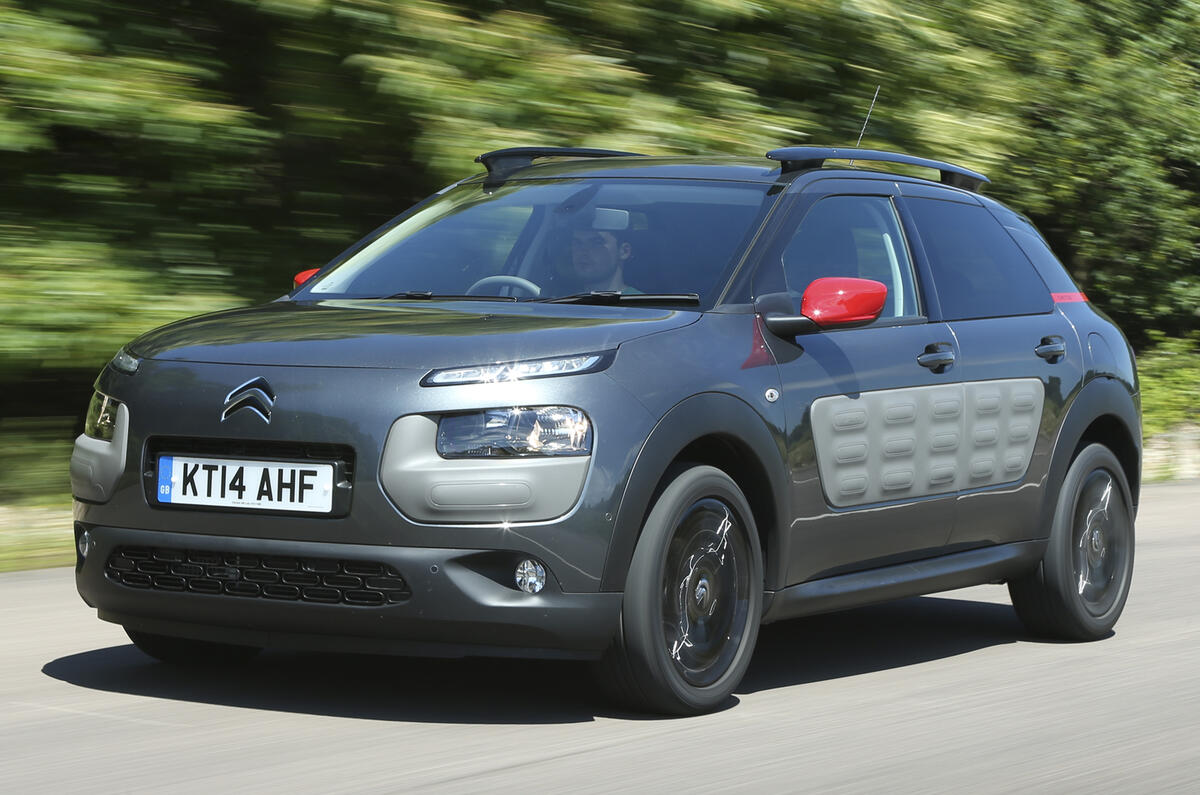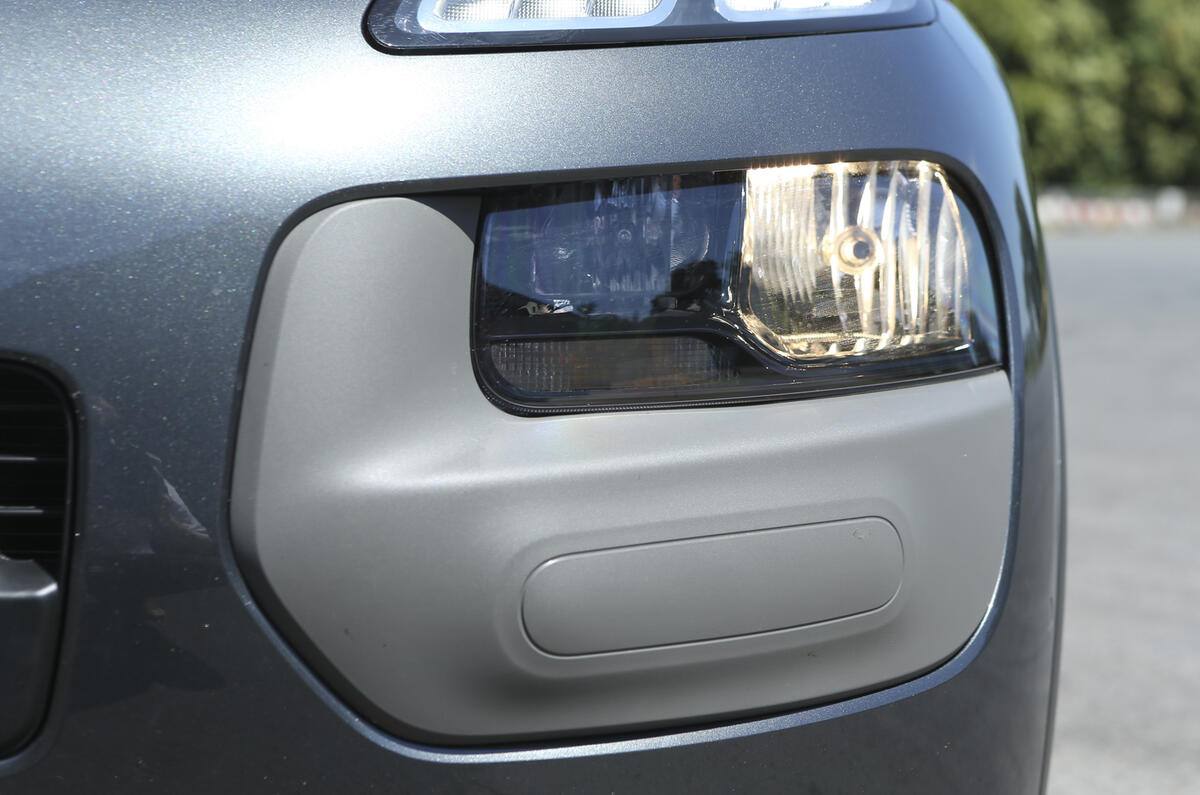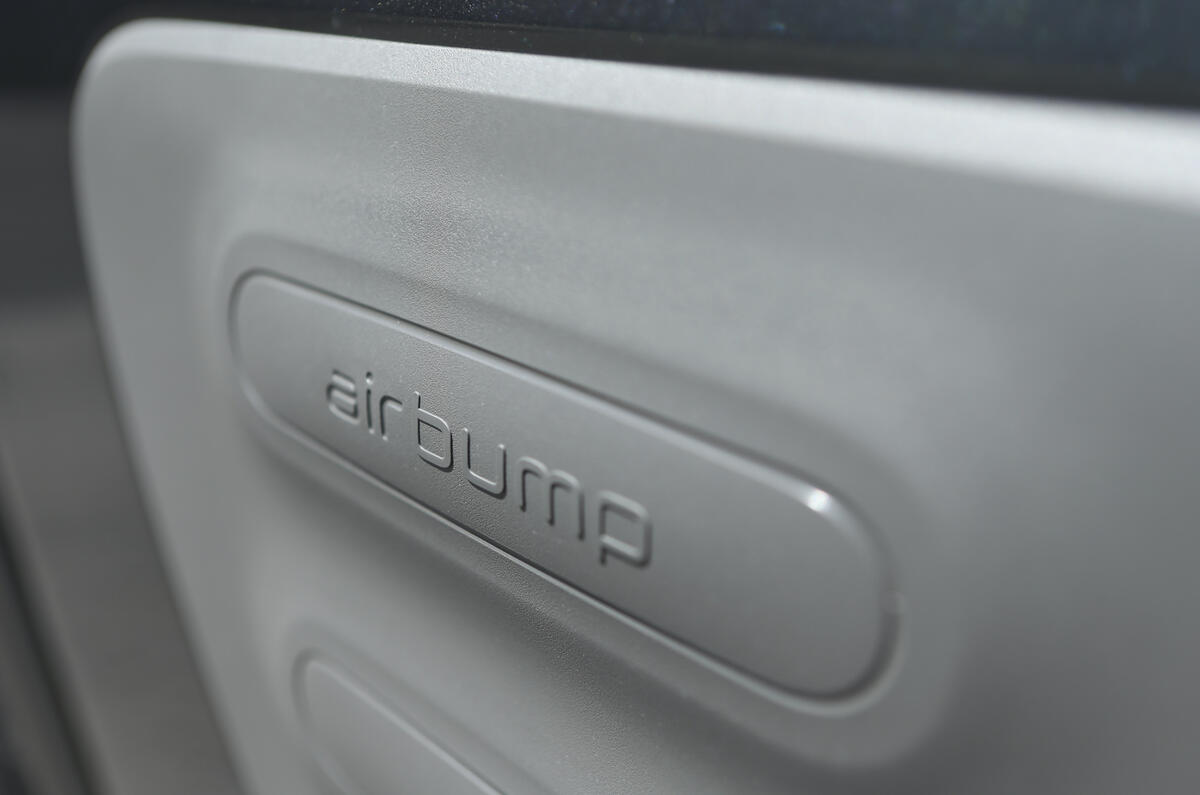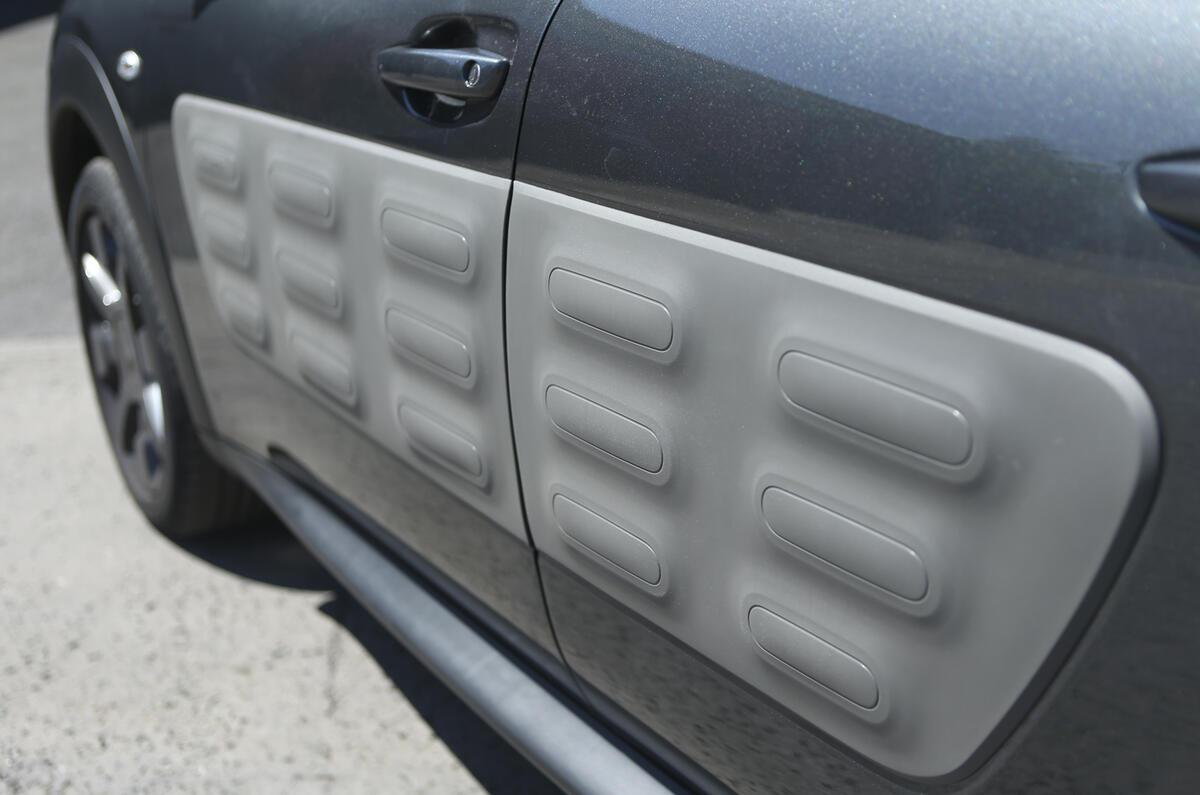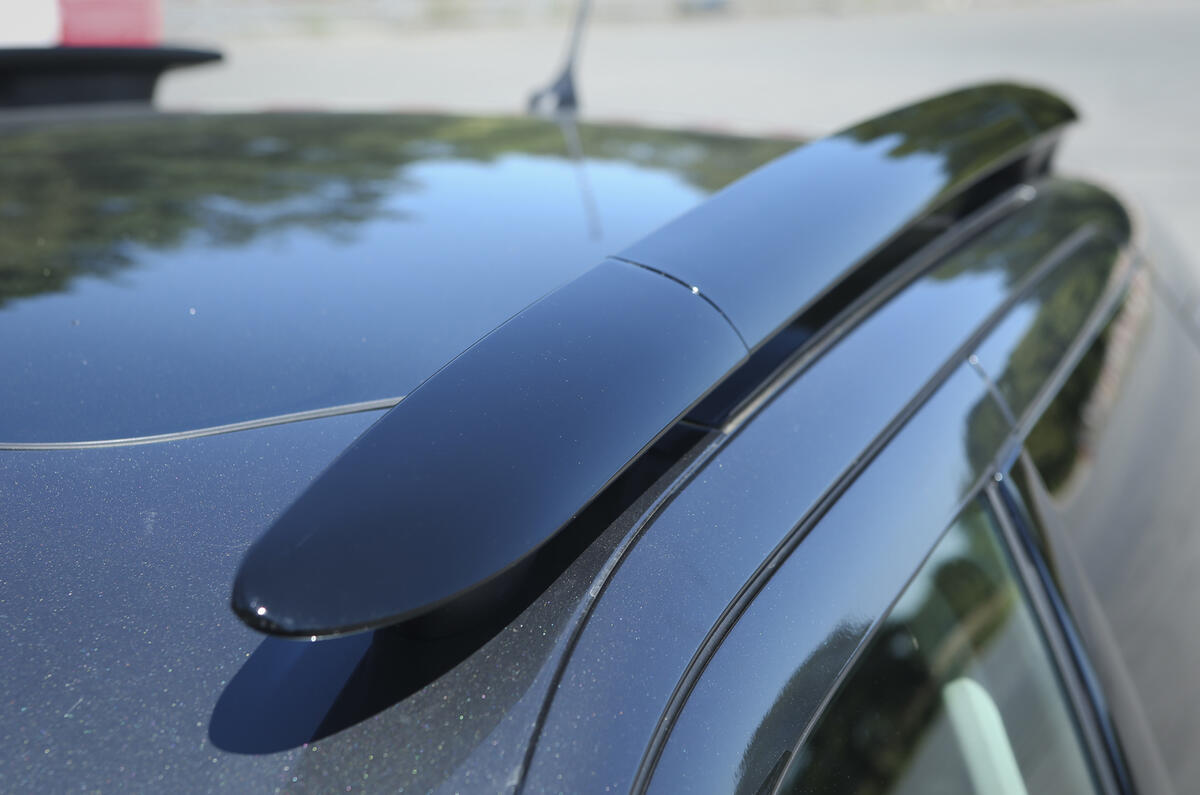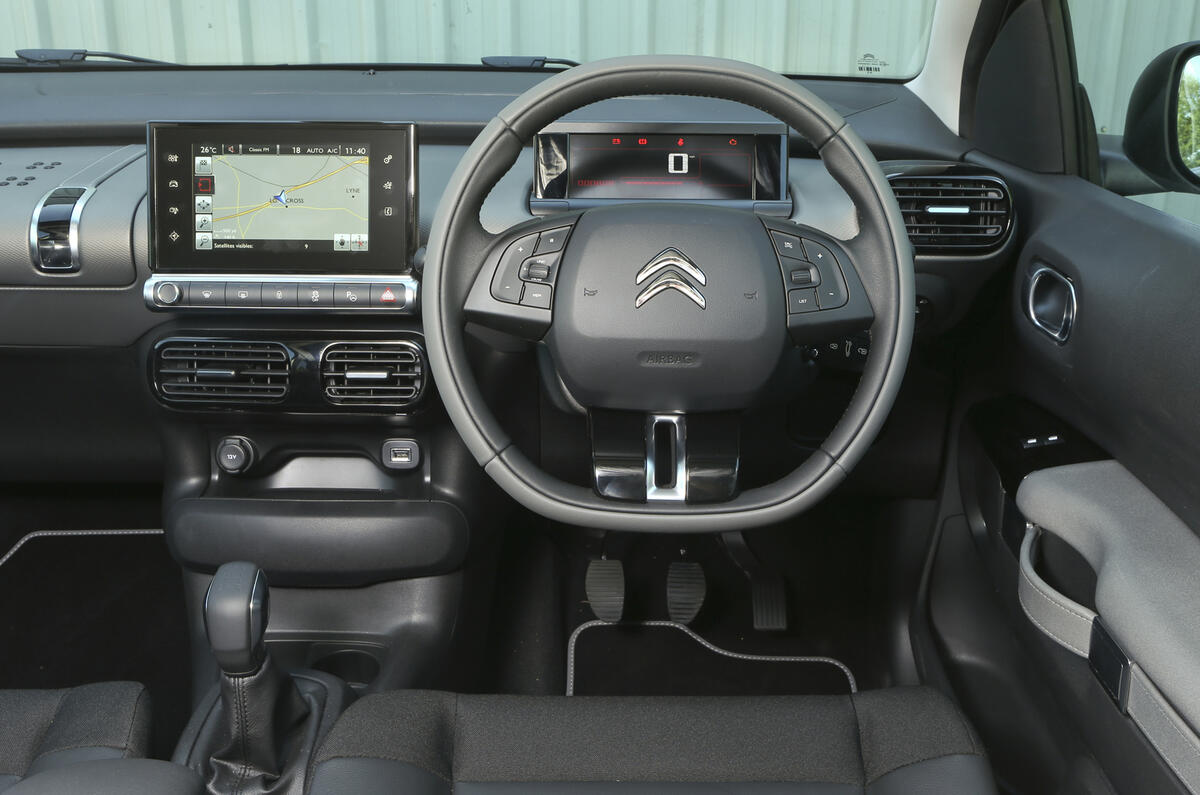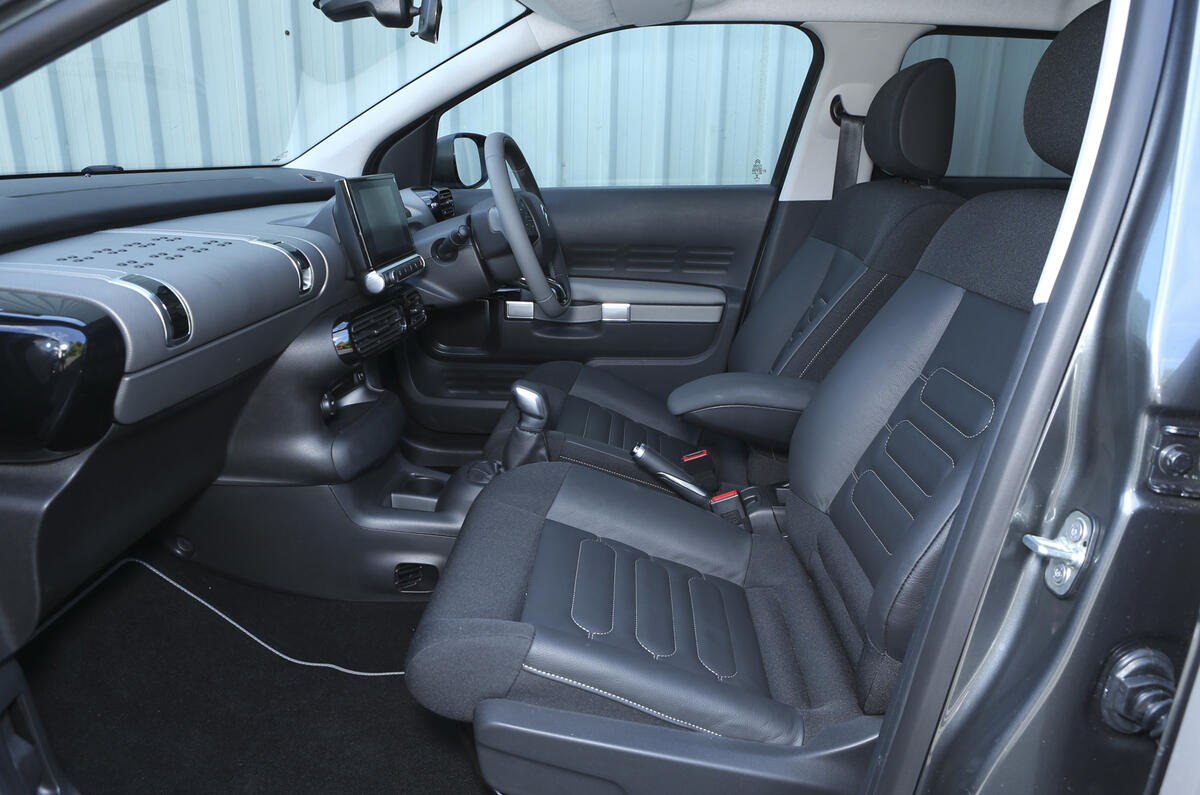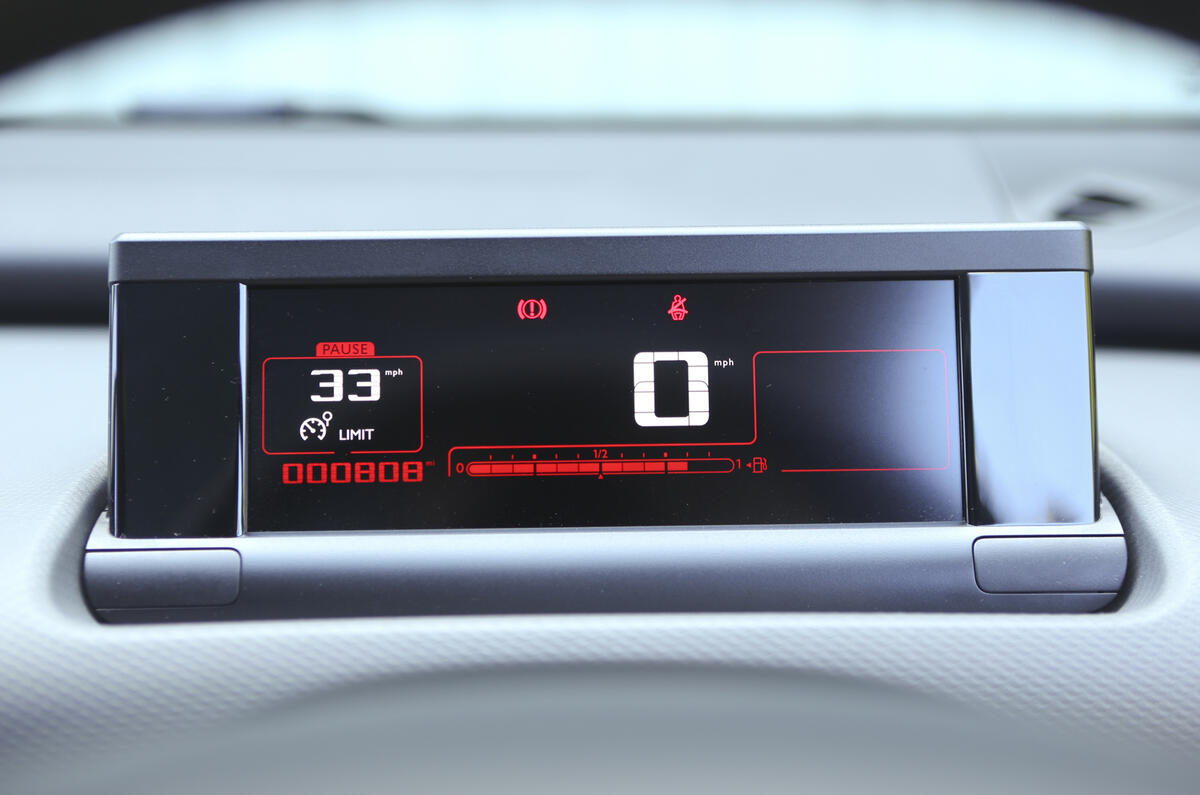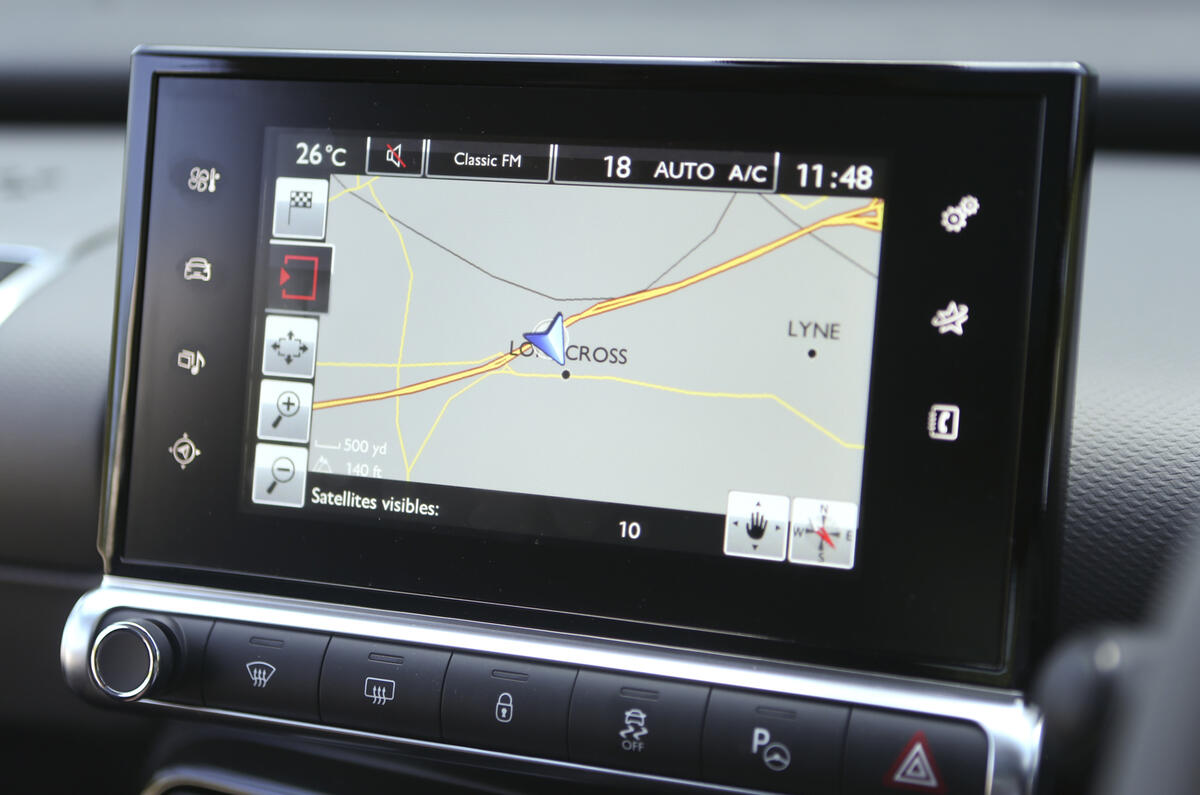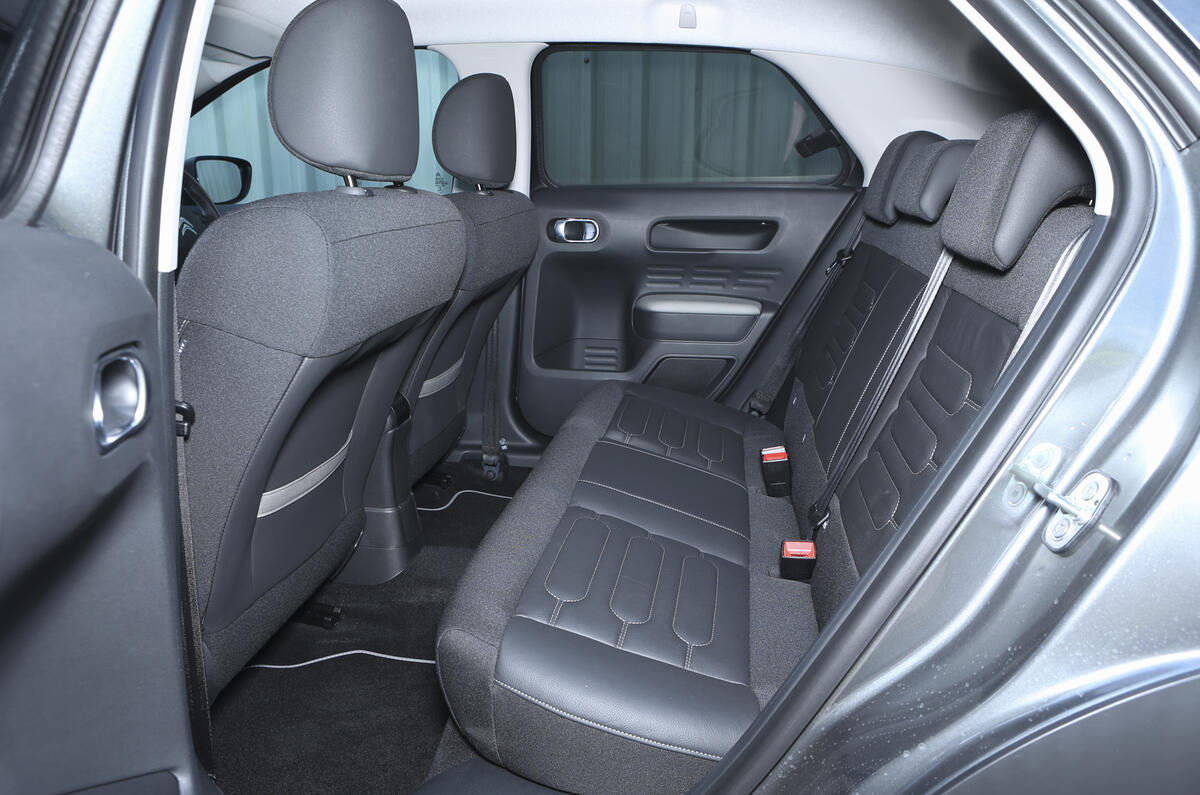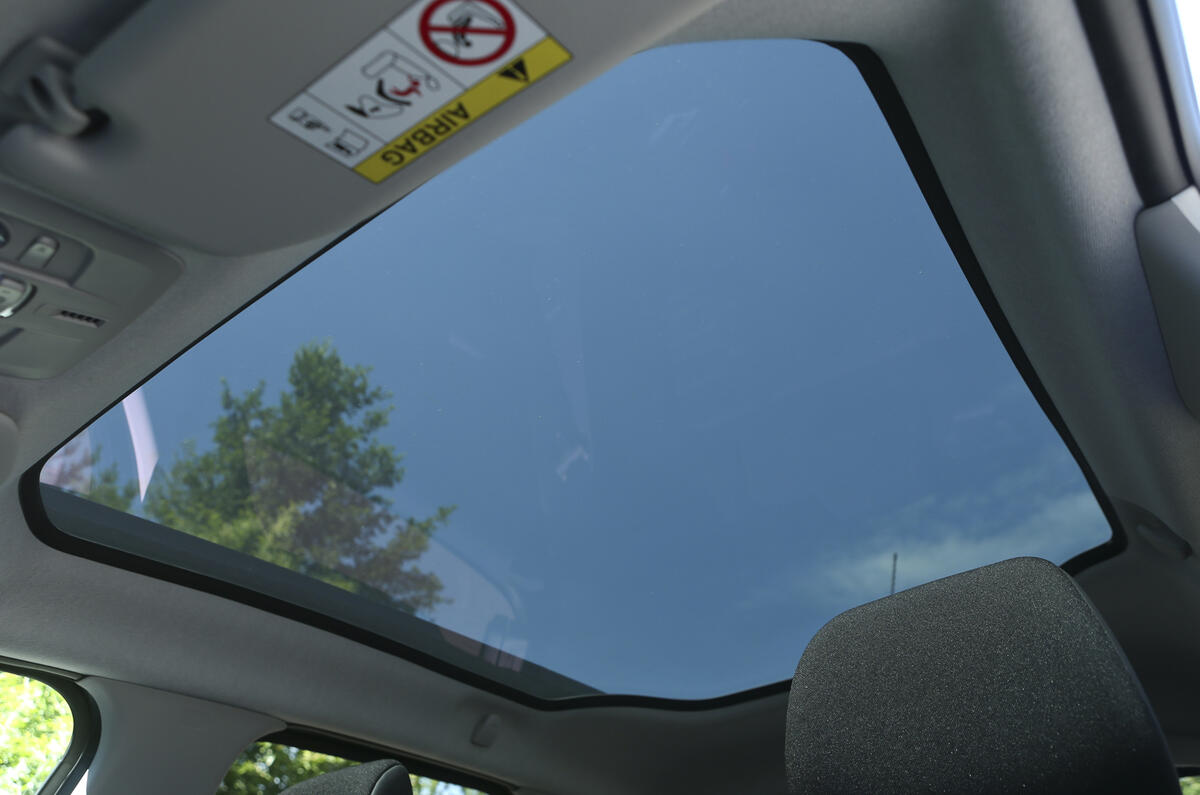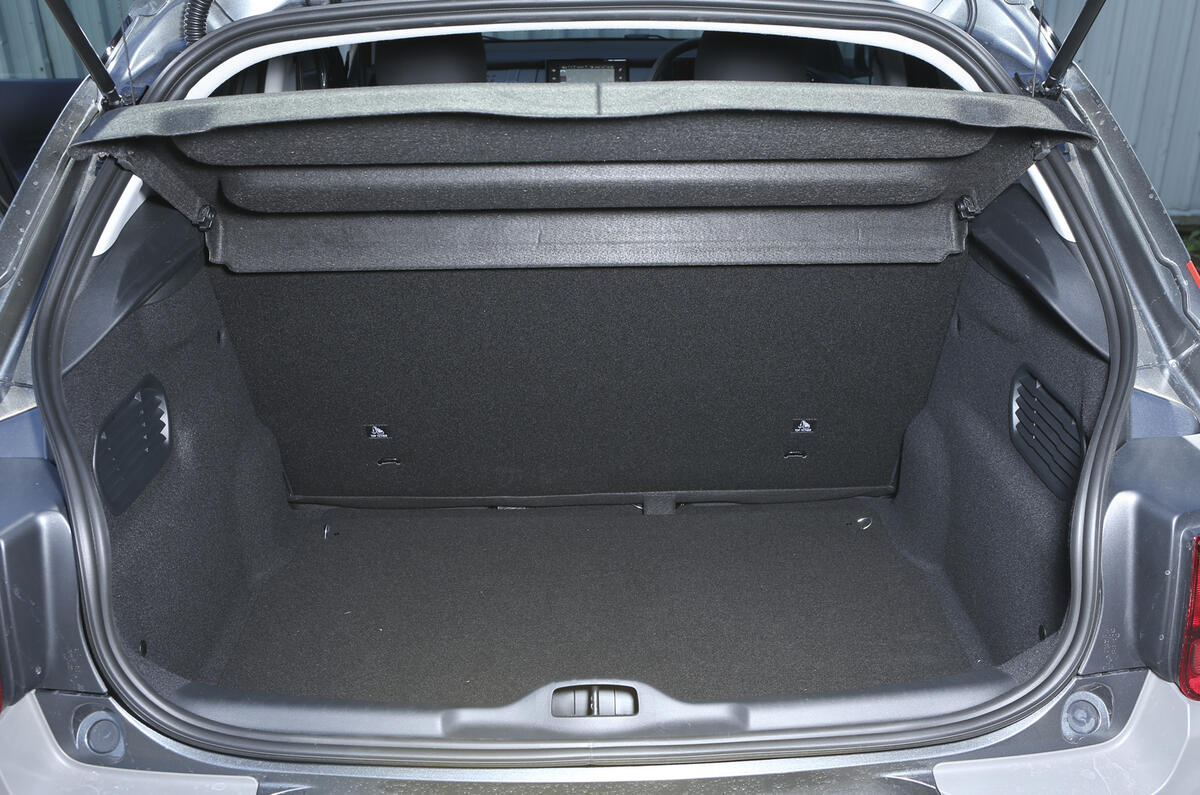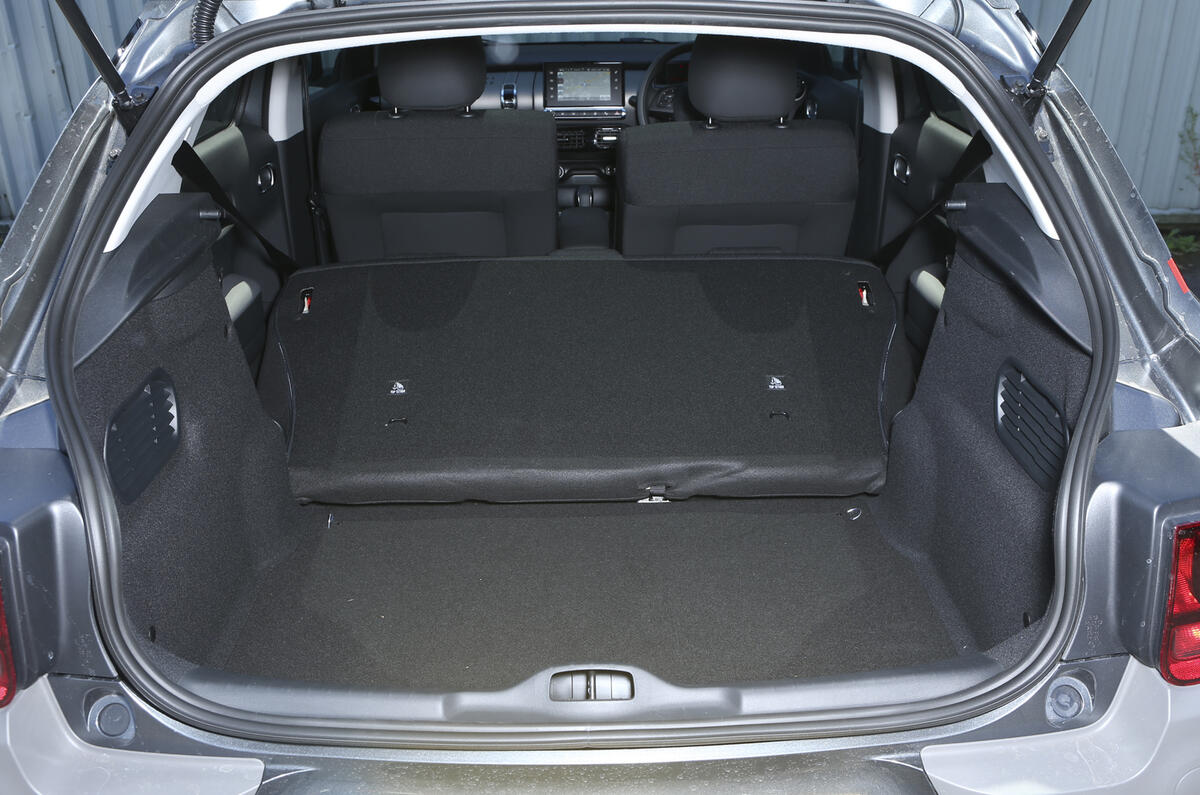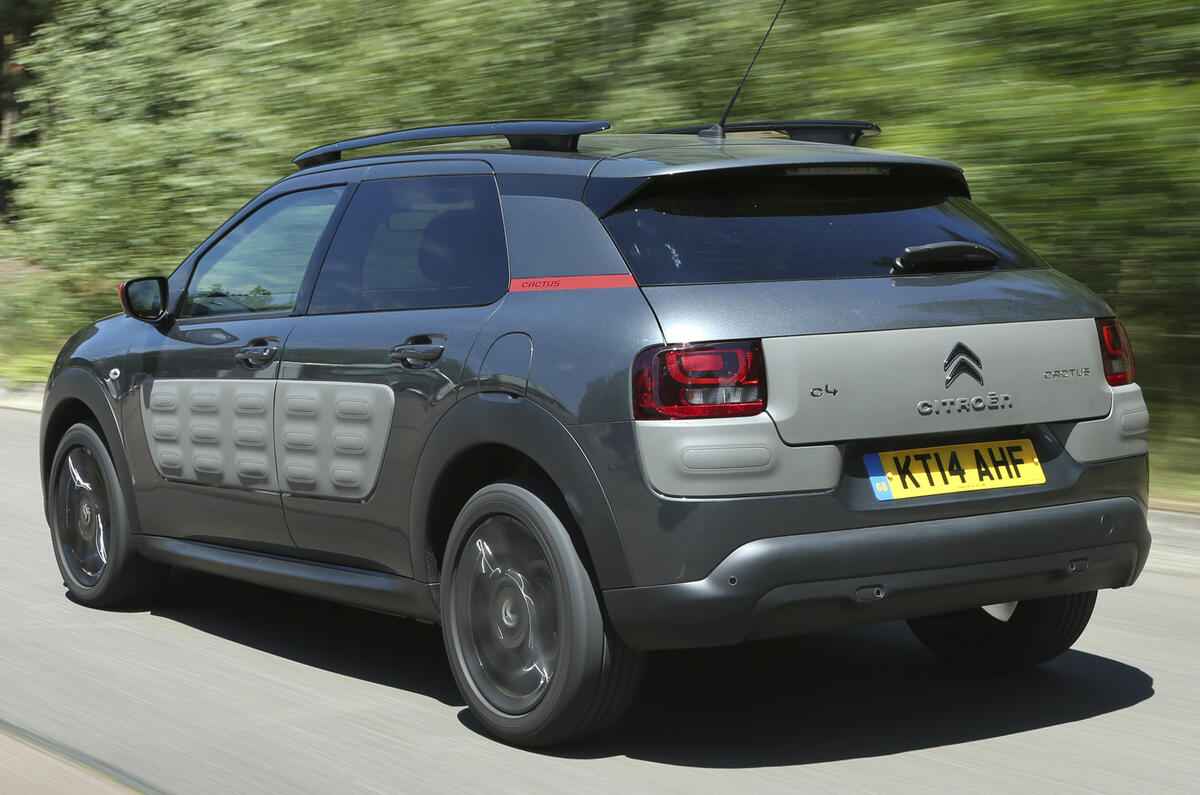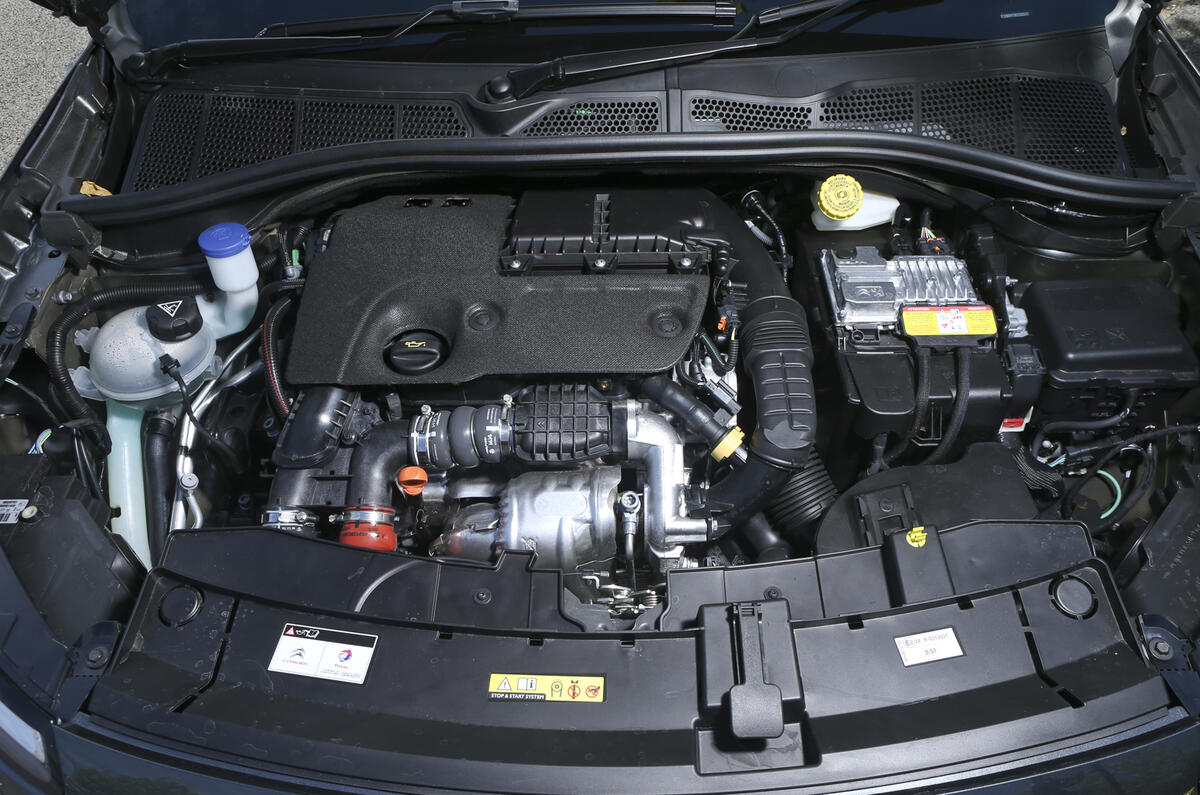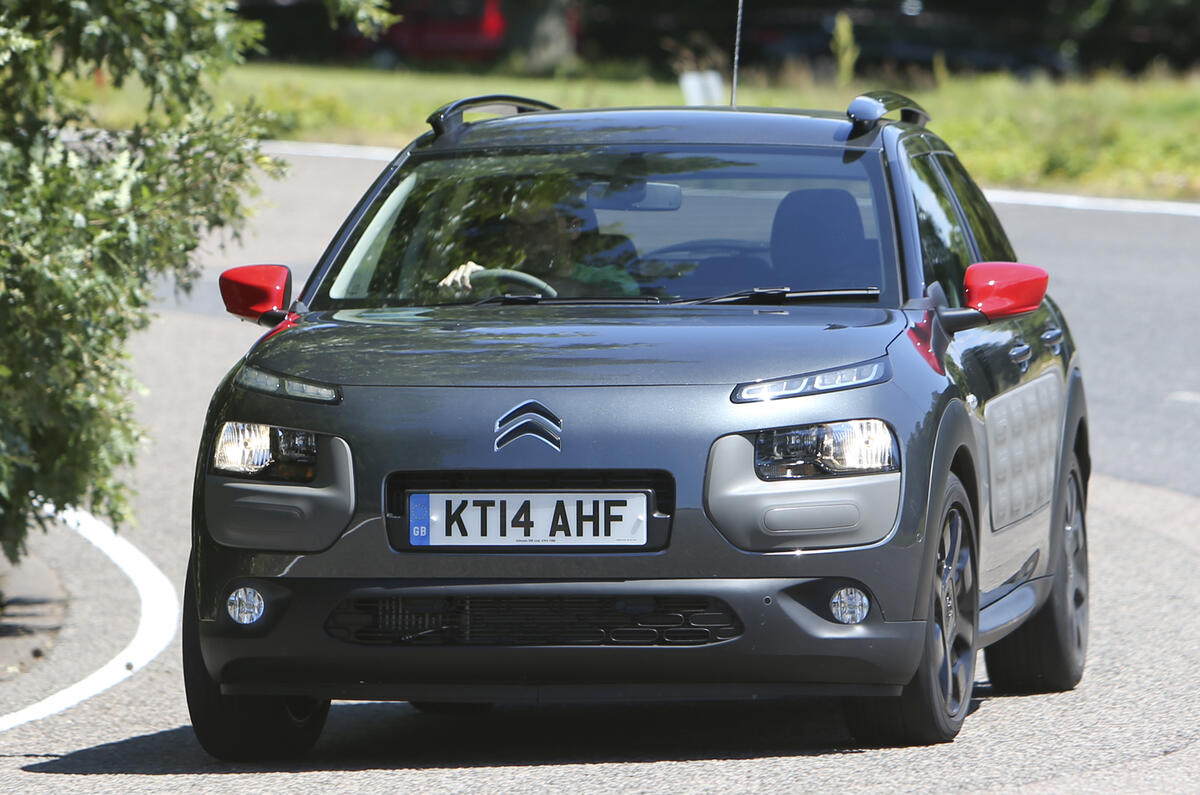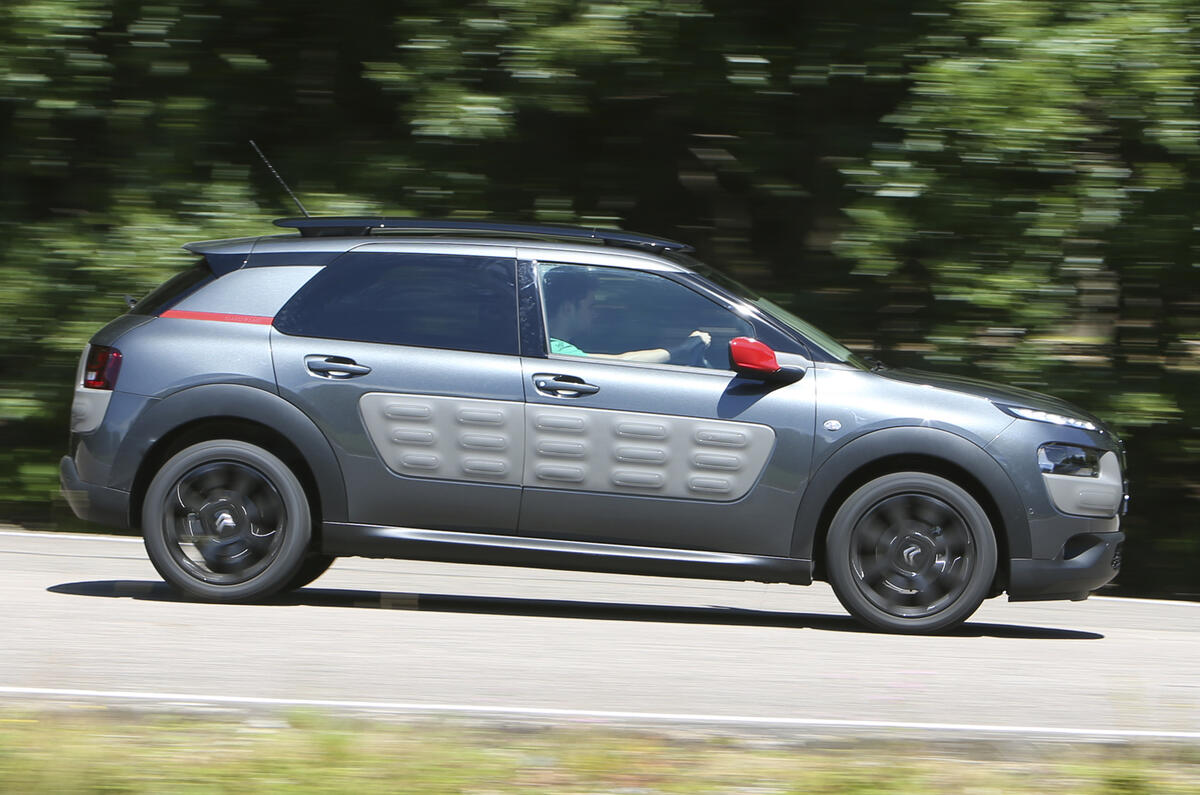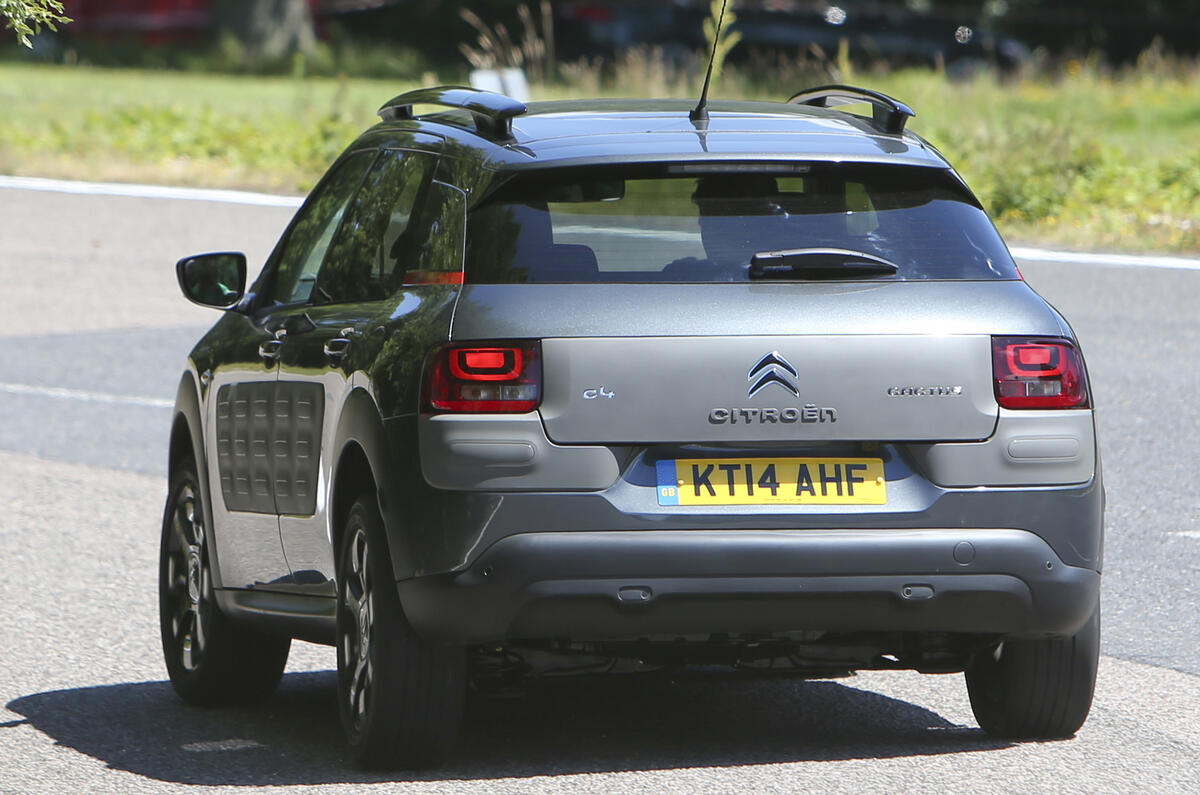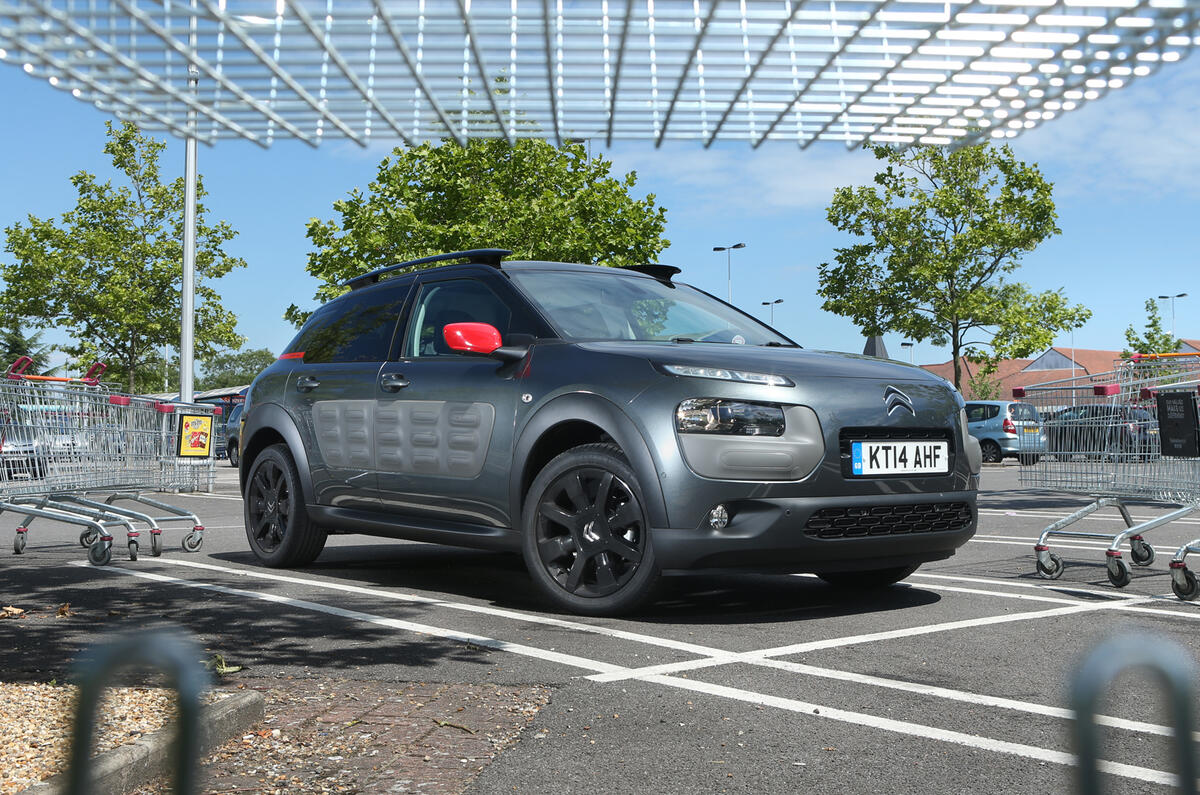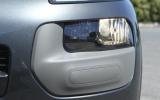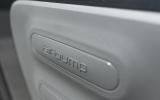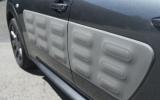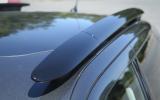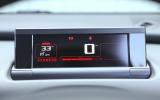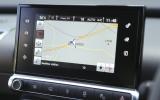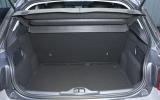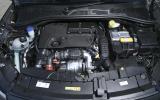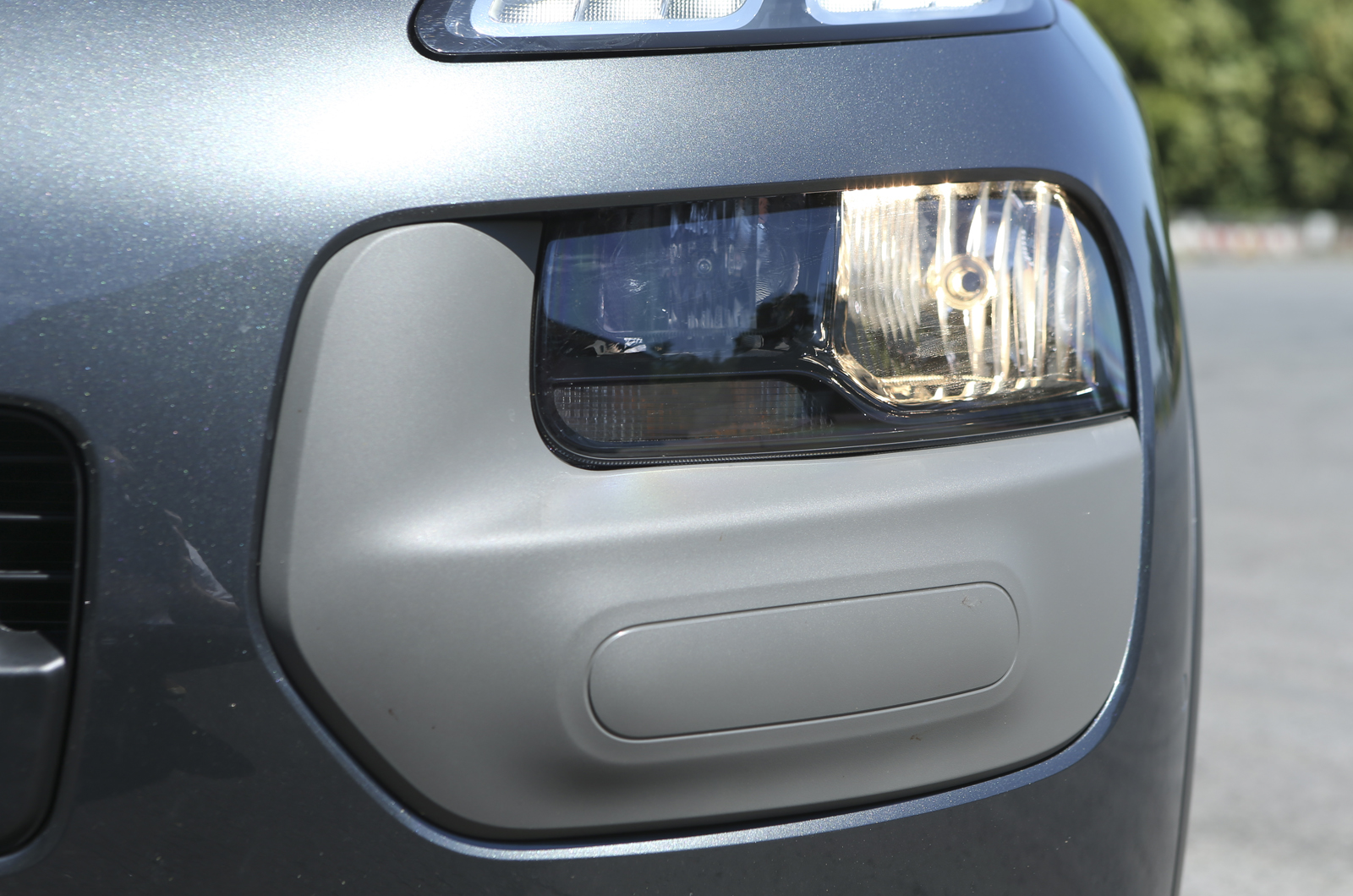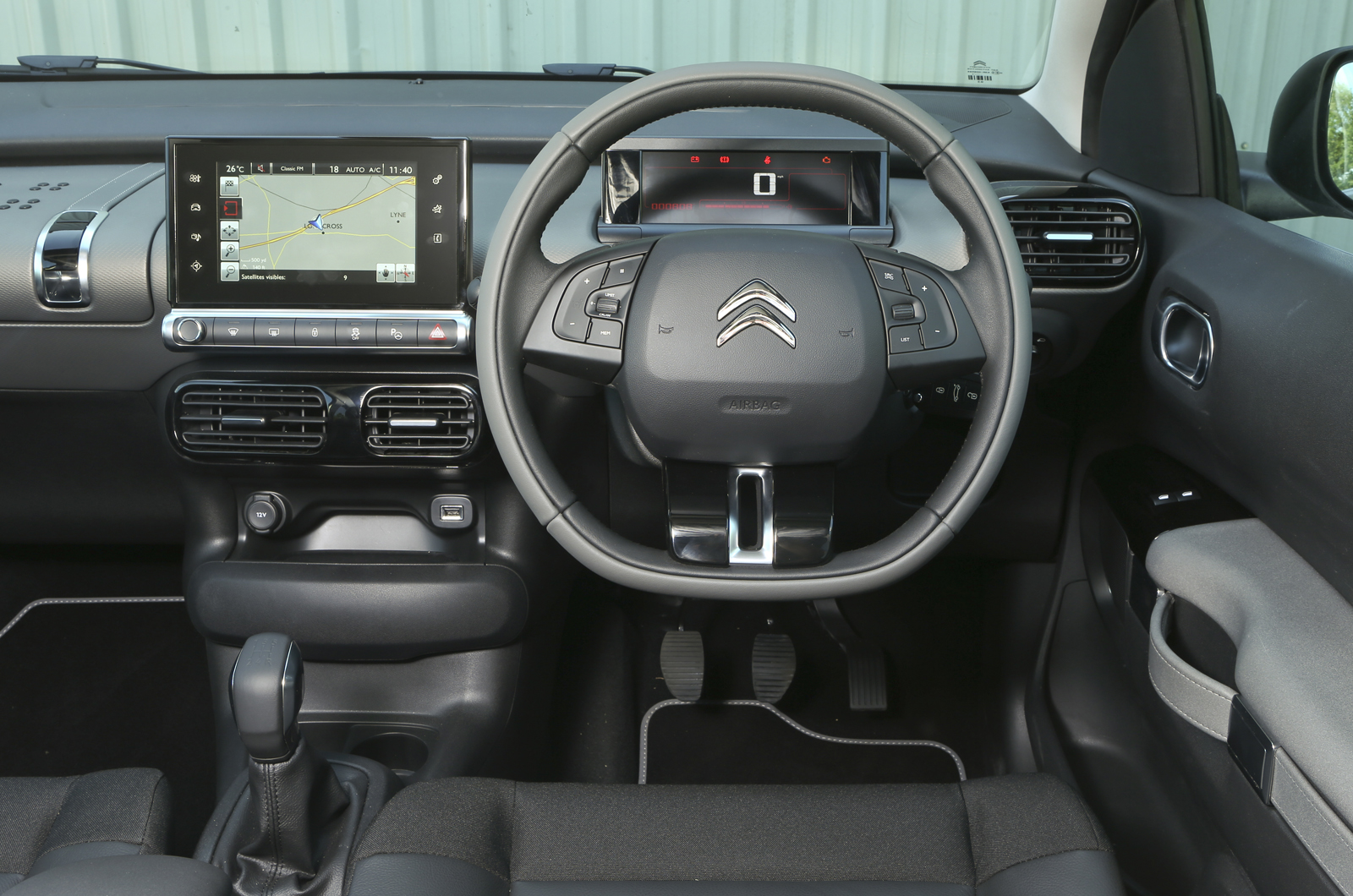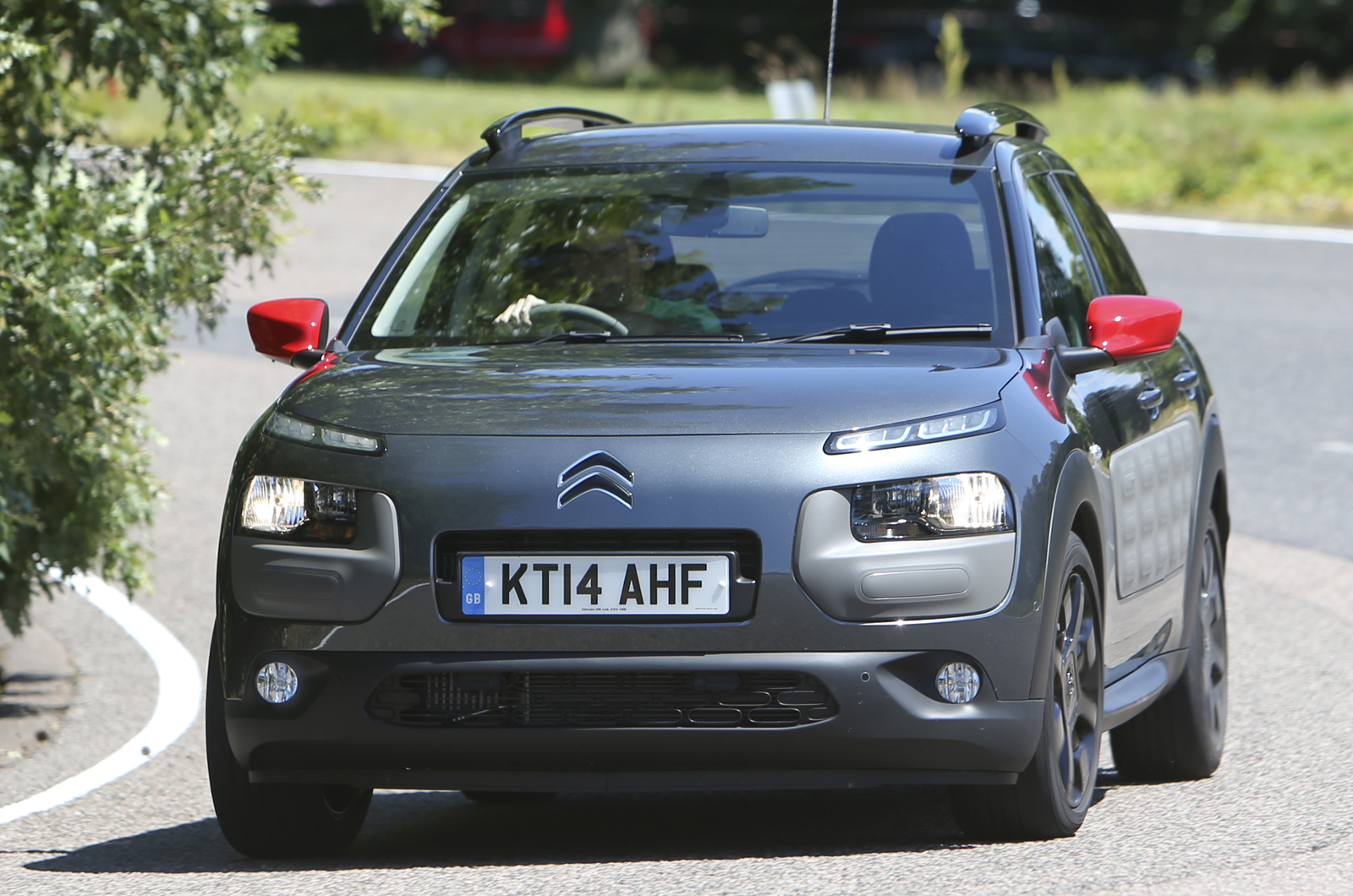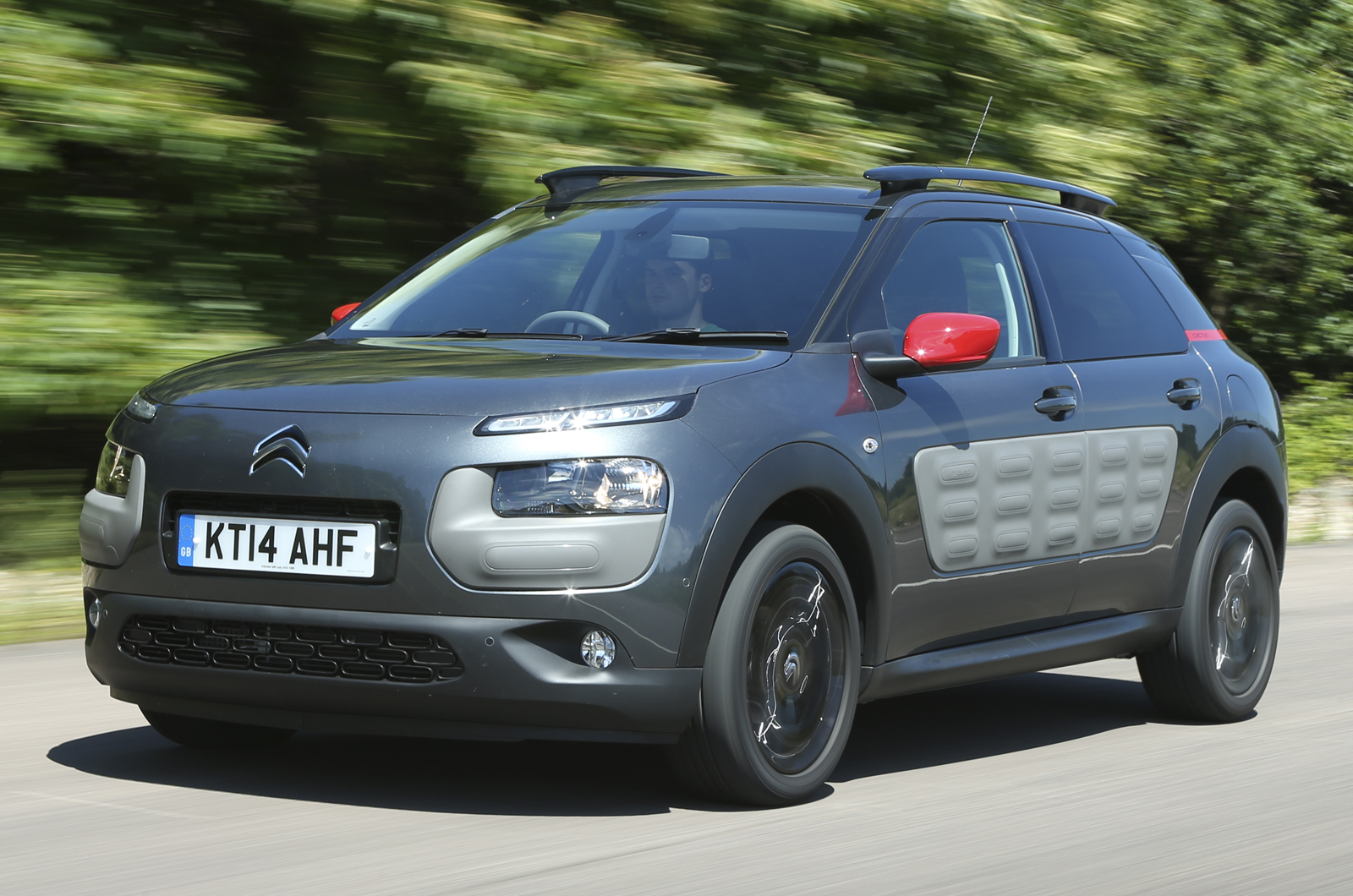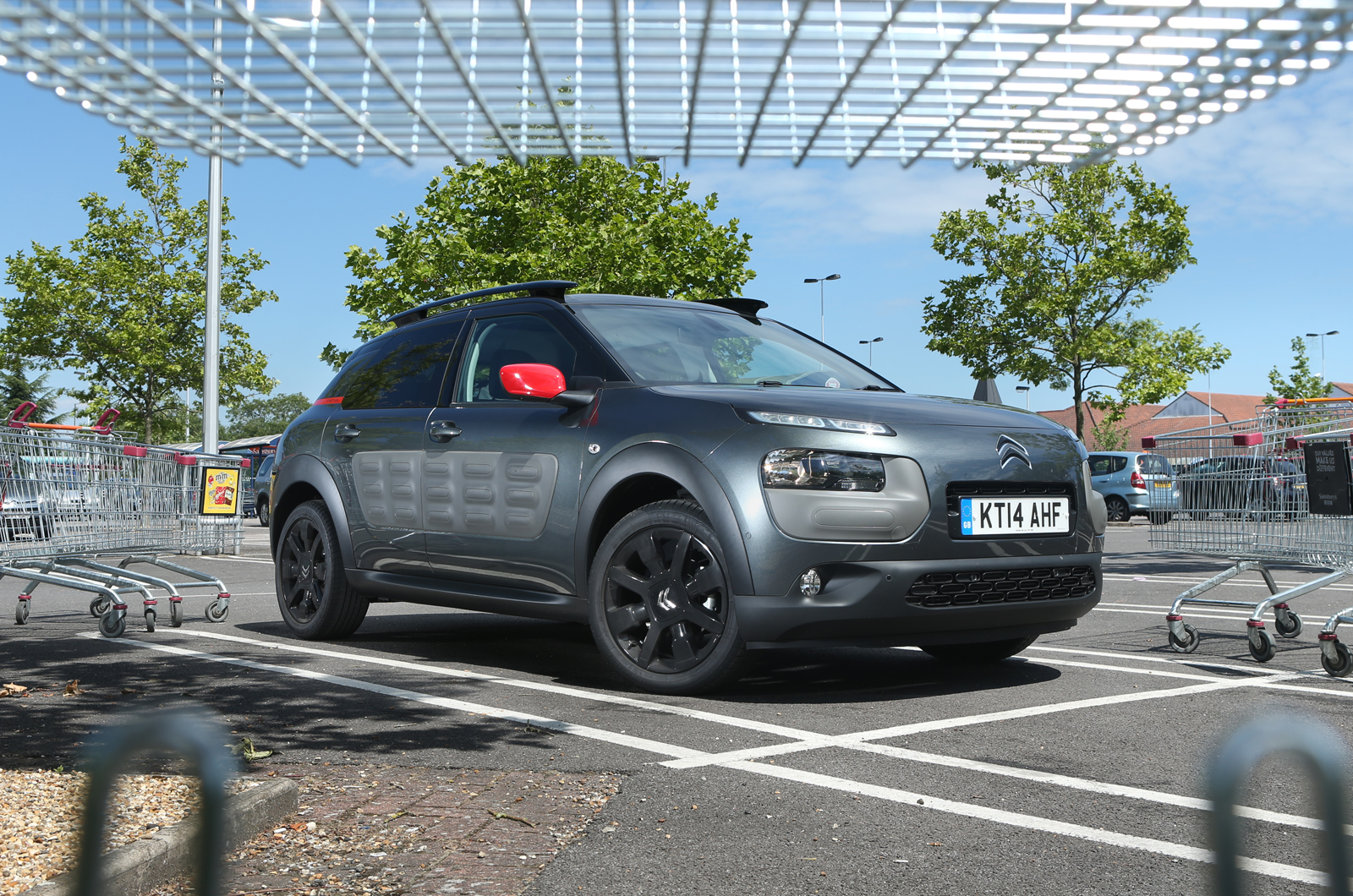Even if you aren't entirely convinced by the Citroën C4 Cactus’s styling – although to us, it seems easy to like – you’ll forgive the car largely because it has so obviously been designed from the inside out.
You get an unmistakable sense of that from the driver’s seat, which is wide and comfortable for such a small car. Head and elbow room are generous and there’s great forward visibility.
The fascia in front of you is low and, rather than looking sparse or bare, has plenty of interesting design features and ritzy touches to occupy your attention.
In some ways, it’s bold in its simplicity; aside from one line of buttons atop the centre stack, functional operation of the car is confined to two LCD screens, a steering wheel, a handbrake and three pedals.
There really isn’t much else to concern or distract you; heating and ventilation settings and the like are all controlled via a central seven-inch colour touchscreen. Unless you’re looking for distraction – at which point you’ll find the designer luggage-inspired interior door handles and glovebox.
There’s a handy little shelf perfectly proportioned for your smartphone, large door bins and a large, convenient button by your right knee to activate the child locks for the back doors. Pragmatic inclusions like this abound.
Likewise, motorbike-inspired consoles, removable multi-storey storage boxes and other gimmicky features of the kind offered in other crossover superminis are notable by their absence. Although you don’t expect soft-touch mouldings throughout for a starting price of just under £13k, it’s disappointing to find such hard, scratchy plastics on the less showy parts of the interior.
The car should really offer a smidge more second-row headroom and reach adjustment on the steering column, too. So this is a merely good cabin, but it’s within sight of being a very good one.
Choosing what to adorn your Cactus with is tricky, but with six trim variations, there should be enough to please most without having to hammer the options list. The entry-level touch model, available only with the lowest powered petrol engine, comes as standard with 15in steel wheels, cruise control and, a 7.0-in infotainment display complete with DAB radio and USB connectivity, but not much else bar the common fixtures and fittings.
Upgrade to the Feel and you get hill start assist, numerous gloss black trim parts, 16in alloy wheels, air conditioning and Bluetooth included in the package, while the Flair trim adds sat nav, a six speaker Arkamys stereo system, rear parking sensors, a reversing camera, climate control, automatic wipers and lights, and heated door mirrors.
Those pining for a Flair Edition Cactus, will find it doesn't add much equipment of note, while the W trim chiefly adds a pearlscent white paint job, fixtures and alloy wheels alongside the stone grey 'Dune-styled' Airbumps. The special edition Ripcurl model gets numerous Ripcurl decals, orange interior trim finishings and Citroën's Grip Control intelligent traction control system, which has several different modes to deal with different surfaces - such as sand and snow.
Citroën’s nav system is good, with respectable display clarity, clear directional tulips and easy route planning. Mapping detail could be better, though.
Meanwhile, the premium stereo streams media reliably and in decent quality but sounds slightly thin and tinny overall.
A Bluetooth link is easy to establish and reconnects automatically — although not for the Touch Drive system’s built-in web browser. For some reason, we had to re-pair every time to use that — and when we did, it was very slow to load web pages and quite frustrating to use.


